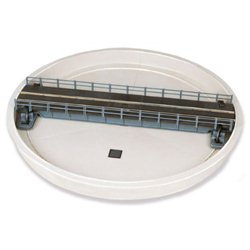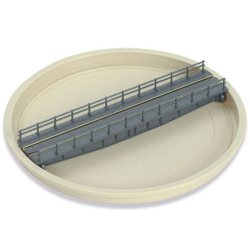As a model aircraft enthusiast, having the right tools is essential for a successful and enjoyable building...
No products
Product successfully added to your shopping cart
There are 0 items in your cart. There is 1 item in your cart.
Search Tips
Christmas and New Year
We are dispatching orders every weekday apart from Christmas Day, Boxing Day and New Year's Day.
If you order is time critical, select next day delivery at checkout.
The shop in Sandown is closed from 25th December, reopening on 30th December.
Where on my layout would I use a turntable?
A turntable is a device that enables locomotives and/or rolling stock to change direction or orientation. It consists of a circular platform, typically made of wood or plastic, that can rotate around a central pivot point. The platform is usually mounted on a bridge-like structure that spans over a pit or well, where the tracks that lead to and from the turntable are located. The bridge also supports a track that runs along the circumference of the turntable and is used to move locomotives onto and off of the turntable.
Turntables can be either manual or motorised, with the latter being the more popular choice among modellers. Motorised turntables are operated by a control mechanism that is connected to a motor, which rotates the platform at a predetermined speed and direction. The control mechanism can be either a simple on/off switch or a more complex system that includes digital controls and feedback sensors.
The primary purpose of a turntable in a model railway layout is to enable locomotives and/or rolling stock to change direction or orientation. This is particularly useful in layouts that have a single mainline track, as it allows trains to run back and forth without having to run in reverse. A turntable can also be used to access hidden sections of a layout or to display locomotives in a roundhouse or engine shed.
The placement of a turntable on a layout depends on the specific needs and requirements of the modeller. In general, a turntable is placed at the end of a siding or at a junction where trains need to change direction. It can also be used to provide access to a staging yard or to allow locomotives to access a particular area of the layout.
Overall, the turntable is a popular feature among model railway enthusiasts, as it adds an extra dimension to the operation of a layout and can enhance the overall realism of the scene. Whether used for reversing trains, displaying locomotives, or accessing hidden sections of a layout, the turntable is an essential tool for any modeller looking to create a dynamic and engaging model railway.
Click here to receive the tips weekly in your mailbox. You can unsubscribe at any time.










